
Pool of Radiance is a role-playing video game developed and published by Strategic Simulations, Inc (SSI) in 1988. It was the first adaptation of TSR's Advanced Dungeons & Dragons (AD&D) fantasy role-playing game for home computers, becoming the first episode in a four-part series of D&D computer adventure games. The other games in the "Gold Box" series used the game engine pioneered in Pool of Radiance, as did later D&D titles such as the Neverwinter Nights online game. Pool of Radiance takes place in the Forgotten Realms fantasy setting, with the action centered in and around the port city of Phlan.

Bureaucracy is an interactive fiction video game released by Infocom in 1987, scripted by comic science fiction author Douglas Adams. Infocom's twenty-fourth game, it is part of the Infocom Plus range which requires a machine with a minimum of 128K of memory.

Road Runner is a racing video game based on the Wile E. Coyote and Road Runner shorts. It was released in arcades by Atari Games in 1985.

Might and Magic Book One: Secret of the Inner Sanctum is an early role-playing video game, first in the popular and influential Might and Magic franchise. It was released in 1986 as New World Computing's debut, ported to numerous platforms and re-released continuously through the early 1990s.
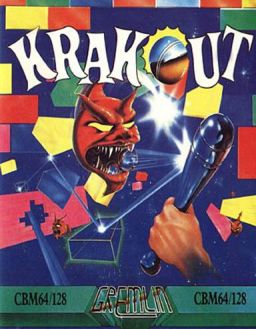
Krakout is a Breakout clone that was released for the ZX Spectrum, Amstrad CPC, BBC Micro, Commodore 64, Thomson computers and MSX platforms in 1987. One of the wave of enhanced Breakout variants to emerge in the wake of Arkanoid, its key distinctions are that gameplay is horizontal in layout, and that it allows the player to select the acceleration characteristics of the bat before playing. It was written by Andy Green and Rob Toone and published by Gremlin Graphics. The music was composed by Ben Daglish.

The Bard's Tale II: The Destiny Knight is a fantasy role-playing video game created by Interplay Productions in 1986. It is the first sequel to The Bard's Tale, and the last game of the series that was designed and programmed by Michael Cranford.

Wizard's Crown is a top-down role-playing video game published by Strategic Simulations in 1986. It was released for the Atari 8-bit computers, Atari ST, IBM PC compatibles, Apple II, and Commodore 64. A sequel, The Eternal Dagger, was released in 1987.

The Faery Tale Adventure is a 1987 action role-playing video game designed by David Joiner and published by MicroIllusions for the Amiga, and later ported to the Commodore 64, MS-DOS, and Sega Genesis. The MS-DOS version is titled The Faery Tale Adventure: Book I. Microillusions also released a "Book 1" version for the Amiga which was going to be the start of a series of games, according to Talin, but bankruptcy prevented it. The initial version was produced for the Amiga 1000 and featured the largest game world to that date. A sequel, Faery Tale Adventure II: Halls of the Dead, was released in 1997.
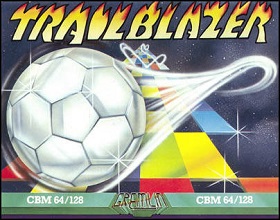
Trailblazer is a racing video game developed by Mr. Chip Software and published by Gremlin Graphics for the ZX Spectrum, Commodore 64, Atari 8-bit computers, Amstrad CPC, Commodore 16 and Plus/4 in 1986. It was ported to the Amiga and Atari ST.
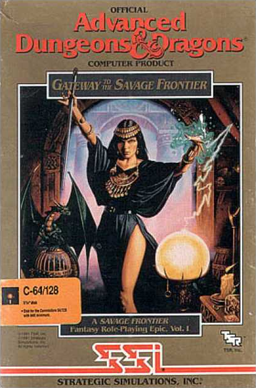
Gateway to the Savage Frontier (1991) is a Gold BoxDungeons & Dragons computer game developed by Beyond Software and published by SSI for the Commodore 64, PC and Amiga personal computers.
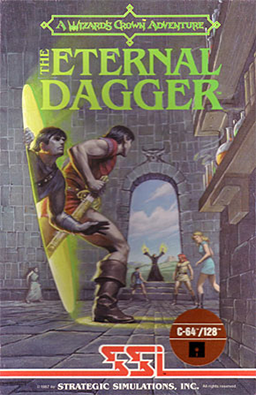
The Eternal Dagger is a top-down role-playing video game published by Strategic Simulations in 1987. It is a sequel to Wizard's Crown from 1986. Demons from another dimension are invading the world, and the only item that can seal the portal is the titular dagger. Players can transfer their characters over from Wizard's Crown, minus whatever magical items they had on them.

Sanxion is a horizontally scrolling shooter developed by Stavros Fasoulas for the Commodore 64 and published in 1986 by Thalamus Ltd. It was the first game released by Thalamus. A ZX Spectrum port followed in 1989. Fasoulas also wrote Delta and Quedex.

World Games is a sports video game developed by Epyx for the Commodore 64 in 1986. Versions for the Apple IIGS, Amstrad CPC, ZX Spectrum, Master System and other contemporary systems were also released. The NES version was released by Milton Bradley, and ported by Software Creations on behalf of producer Rare. The Master System version was done by Sega.

Savage is an action game developed by Probe Software and published by Firebird Software in 1988 for ZX Spectrum, Commodore 64, Amstrad CPC, Atari ST, and MS-DOS. In 1989 Firebird published a version for the Amiga.

Elvira II: The Jaws of Cerberus is the second game in the Elvira series of horror adventure/role-playing video games. It was developed by Horror Soft and published by Accolade in 1992. The game is a sequel to 1990's Elvira: Mistress of the Dark. It was followed by Waxworks, which can be considered its spiritual sequel.

Realms of Darkness is a fantasy role-playing video game developed by Strategic Simulations and published in 1986. It was developed for the Apple II and Commodore 64.

Dream Zone is an adventure game developed by JAM Software and published by Baudville. It was released in 1988 for the Apple II and Apple IIGS, followed by versions for MS-DOS, the Amiga, and the Atari ST.
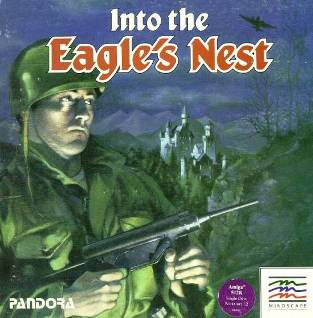
Into the Eagle's Nest is a video game developed by Pandora and published in 1987 for Amiga, Amstrad CPC, Apple II, Atari ST, Commodore 64, IBM PC compatibles, and ZX Spectrum. Atari Corporation also released a cartridge version for the Atari 8-bit computers the following year on the Atari XEGS.

Global Commander is a computer game developed by Martech in 1987 for the Amiga, Amstrad CPC, Atari ST, Commodore 64, and ZX Spectrum.

Tangled Tales: The Misadventures of a Wizard's Apprentice is a computer game developed by Origin Systems in 1989 for the Apple II, MS-DOS, and Commodore 64.




















